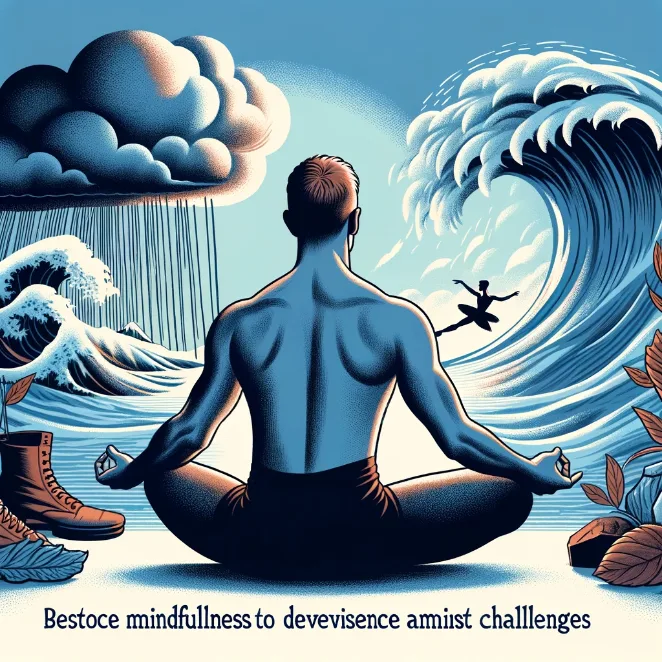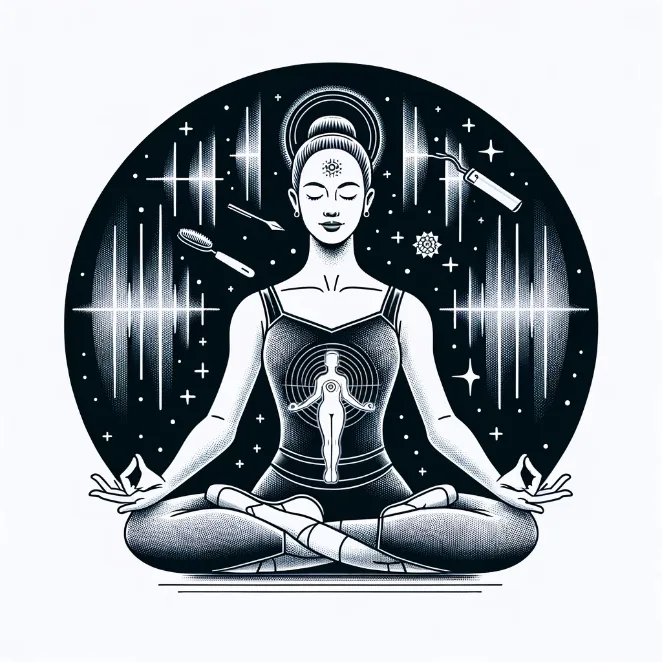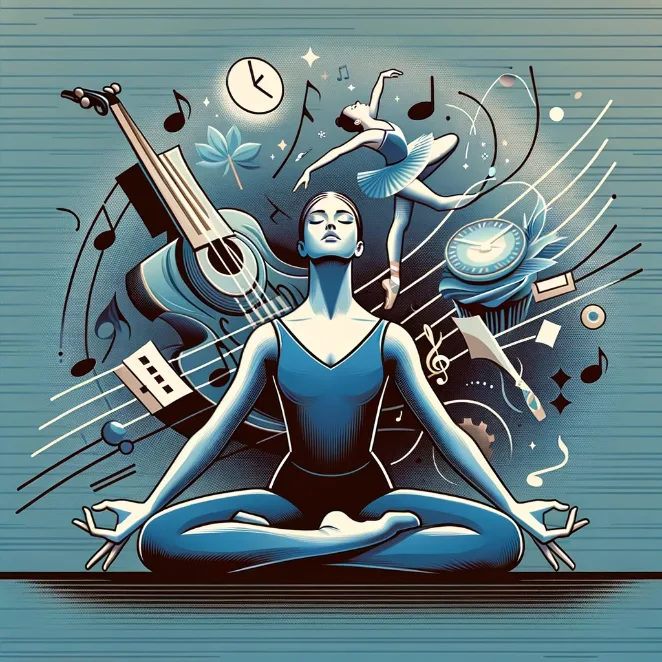
The Dance Of The Mind & Body
Ballet is often described as the art of defying gravity, where dancers seem to float effortlessly across the stage. Achieving this illusion requires an extraordinary level of mind-body coordination and awareness. Meditation, with its emphasis on mindfulness, can be a transformative tool for ballet dancers.
article by Hina Kurosawa
Enhancing Mind-Body Awareness
In the world of ballet, precision is paramount. Every movement, from the extension of a leg to the subtlest of gestures, must be executed with absolute accuracy. To achieve this, dancers need to have an acute awareness of their bodies. Meditation, particularly techniques that focus on body scanning, can be invaluable. By mentally exploring each part of their body, from the tips of their toes to the crown of their head, dancers can identify areas of tension, imbalance, or misalignment.
Once these areas are recognized, dancers can use meditation to release physical and mental tension. The practice of progressive muscle relaxation, often used in meditation, involves tensing and then relaxing muscle groups. This technique helps ballet dancers become more in tune with their bodies, ensuring that they can achieve the fluid, controlled movements that define their art.
This heightened awareness also extends to posture and alignment. Meditation encourages dancers to develop a deep understanding of their bodies, enabling them to correct misalignments and prevent injuries. As they become more connected to their physical selves, they can perform with greater precision, grace, and ease.

Embracing the Present Moment
A central tenet of ballet is the ephemeral nature of a performance. Dancers have only a few minutes to convey a story, emotion, or idea through movement, and this requires full immersion in the present moment. However, the demands of rehearsals, the pressures of live performances, and the pursuit of perfection can create distractions and anxieties that pull dancers away from the now.
Meditation, particularly mindfulness meditation, teaches the art of presence—the ability to be fully engaged in the present. Through mindfulness practices, dancers learn to let go of distractions and anticipations, redirecting their attention to each movement, each breath, and each note of music. This profound presence enhances the artistic quality of their performances, allowing them to connect with audiences on a deeper level.
Moreover, meditation reduces performance anxiety and stage fright, common challenges in the world of ballet. Dancers discover that, in the realm of meditation, they can experience liberation from worries about the past or future. They realize that their sole responsibility is to dance in the present moment, allowing them to fully express themselves and convey their artistry with authenticity.

The Inner World of Poise
Poise, the hallmark of ballet, is defined by a dignified and graceful bearing, a quality that extends beyond physical movement to encompass a sense of inner calm. Meditation provides ballet dancers with the tools to cultivate this inner poise and composure, which are vital in the face of demanding choreography or the pressures of competition.
Meditation practices centered on breathing, such as pranayama techniques, offer invaluable support. These techniques teach dancers to regulate their breath, not only for the purpose of stamina but also to remain calm under pressure. In ballet, controlled breathing is essential for executing complex movements gracefully. Meditation helps dancers maintain focus and composure, even during the most physically demanding sequences.
Additionally, meditation encourages self-acceptance and self-assuredness, allowing dancers to project confidence and grace on stage. Through practices like loving-kindness meditation, they learn to cultivate a positive self-image and extend compassion to themselves. This newfound self-assuredness translates into a serene and self-possessed presence that captivates audiences.

Resilience In The Face Of Challenges
Ballet is a demanding art form that often involves physical pain and emotional challenges. Injuries, rejections, and grueling practice schedules can take a toll on a dancer's mental and emotional well-being. Meditation can foster resilience by teaching dancers to embrace difficulties as opportunities for growth.
Mindfulness practices, in particular, help dancers navigate adversity. By observing their thoughts and emotions without judgment, they can develop a healthier relationship with their struggles. Meditation helps them accept that setbacks and failures are an integral part of their journey, fostering mental resilience.
Furthermore, meditation allows dancers to find deeper meaning in their artistry. They begin to understand that ballet is not just about perfection but also about expressing their unique selves. This shift in perspective enables them to approach challenges with greater equanimity, knowing that each experience, whether triumphant or challenging, contributes to their growth as artists and individuals.

Meditation and ballet share a common thread—the pursuit of beauty, harmony, and self-expression. By incorporating meditation into their training and daily lives, ballet dancers can refine their technique, enhance their presence, and nurture their inner poise. This holistic approach not only benefits their artistry but also fosters mental and emotional well-being.
In the serene realm of meditation, dancers discover the inner strength and grace that elevate their performances to breathtaking heights. Their heightened mind-body awareness, cultivated presence, and unwavering poise captivate audiences and remind us all of the profound beauty of ballet as both an art form and a spiritual practice.
Published: 12/1/2023
Modified: 12/1/2023
More predictions
Come back here soon to learn more about yourself and your future


Meditation & Lucid Dreaming
The realms of meditation and lucid dreaming are both profound and mystical in their own right. Meditation, with its deep introspection and self-discovery, and lucid dreaming, where the dreamer becomes conscious within the dream, offer unique gateways to explore the enigmatic world of the unconscious mind. In this article, we embark on a journey to understand the intricate connection between meditation and lucid dreaming, exploring how they complement each other, and how these practices can lead to profound insights into the deepest layers of our consciousness.


Meditation In Virtual Reality: A Journey Within
This article delves into the fascinating world of meditative VR experiences, exploring how they provide a unique gateway to mindfulness and self-discovery. We will examine the potential benefits, the merging of technology and spirituality, and the profound impact of these immersive experiences on the mind.


Meditation and the Oceans: Flowing with the Tide
Meditation has an uncanny way of connecting us to the natural world, allowing us to harmonize with its rhythms and energies. One of the most compelling natural wonders that has captured the hearts and minds of meditators is the ocean. Its vastness, ebb and flow, and profound depth mirror the inner workings of the mind and spirit. In this article, we will explore the powerful synergy between meditation and the oceans, delving into the transformative experiences and insights that arise when we connect with these majestic bodies of water.